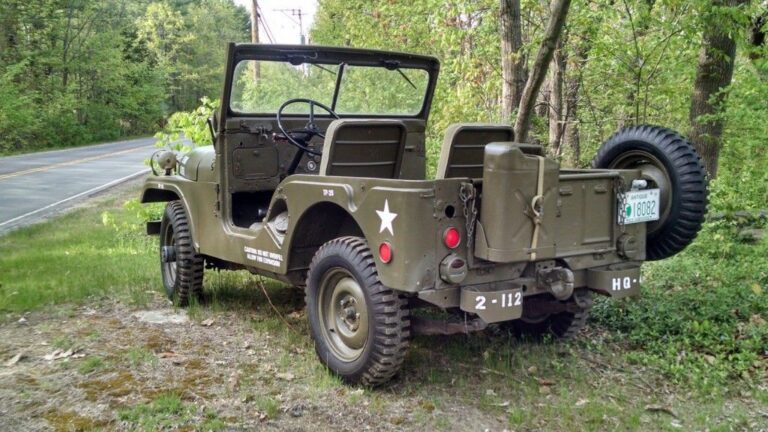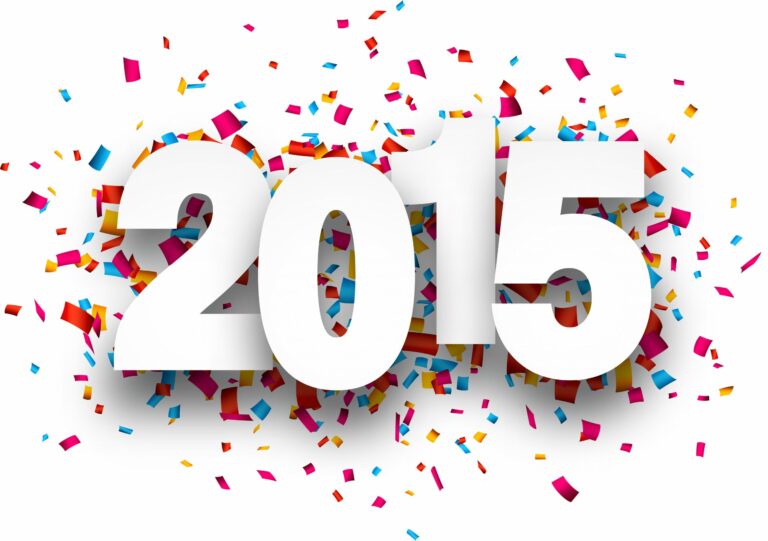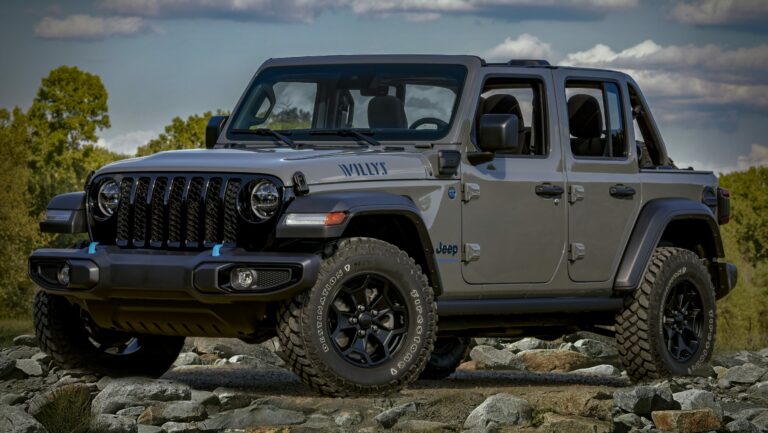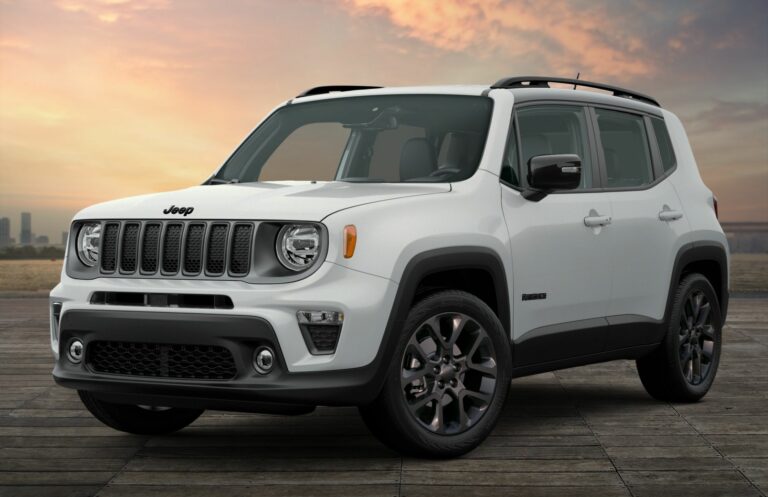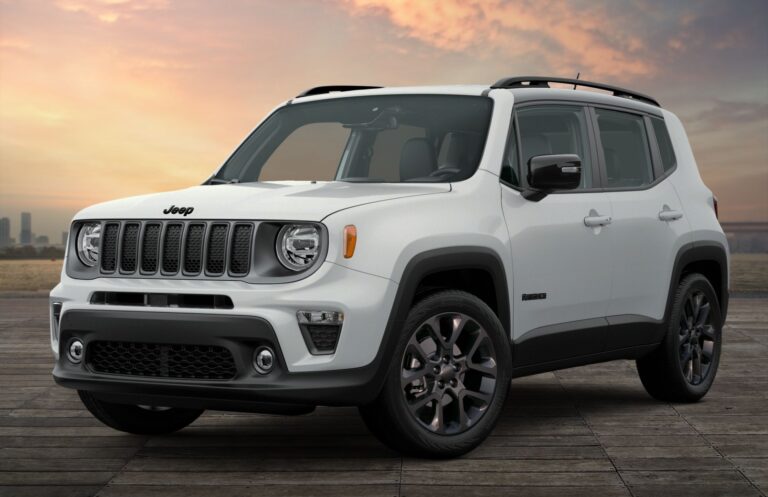1980 Jeep CJ For Sale: Your Ultimate Guide to Owning an American Icon
1980 Jeep CJ For Sale: Your Ultimate Guide to Owning an American Icon /jeeps.truckstrend.com
The year 1980 holds a special place in the hearts of off-road enthusiasts and classic vehicle collectors alike, largely due to the enduring legacy of the Jeep CJ. More specifically, the 1980 Jeep CJ-7, a quintessential embodiment of rugged American spirit and go-anywhere capability, continues to captivate buyers seeking an authentic, unfiltered driving experience. Unlike modern SUVs packed with electronics and creature comforts, the 1980 CJ-7 offers a raw, visceral connection to the road – or lack thereof – a testament to its utilitarian design and unwavering purpose. This article serves as a comprehensive guide for anyone considering a 1980 Jeep CJ for sale, delving into its enduring appeal, crucial buying considerations, market insights, and the unique ownership experience it offers.
The Enduring Appeal of the 1980 Jeep CJ-7
1980 Jeep CJ For Sale: Your Ultimate Guide to Owning an American Icon
The 1980 Jeep CJ-7 arrived at a pivotal time for the CJ line. Built by American Motors Corporation (AMC), the CJ-7 was introduced in 1976 as a slightly longer wheelbase alternative to the venerable CJ-5. This increased length (10 inches longer than the CJ-5) allowed for a more stable ride, especially at highway speeds, and made room for an automatic transmission option – a significant upgrade for many buyers. By 1980, the CJ-7 had cemented its reputation as a highly capable, adaptable, and fun-to-drive vehicle.
What makes the 1980 model particularly appealing today?
- Classic Aesthetics: Its unmistakable boxy profile, round headlights, and seven-slot grille are instantly recognizable and evoke a strong sense of nostalgia. The removable doors and windshield, along with the ability to run with a soft top or no top at all, offer an unparalleled open-air experience that modern vehicles simply can’t replicate.
- Mechanical Simplicity: Beneath its rugged exterior lies a relatively straightforward mechanical design. This simplicity translates to easier maintenance for the DIY enthusiast and generally lower repair costs compared to more complex modern vehicles. Parts availability is surprisingly good, thanks to a robust aftermarket.
- Off-Road Prowess: The CJ-7 was built for the trail. Its short overhangs, solid axles (Dana 30 front, AMC 20 rear), and robust 4×4 system (typically with a Dana 300 transfer case in 1980) make it incredibly capable in challenging terrain. Many CJs have been further enhanced with lift kits, larger tires, and lockers, pushing their off-road limits even further.
- Community and Customization: Owning a CJ-7 connects you to a vibrant community of enthusiasts. The aftermarket support for these vehicles is immense, allowing owners to customize their Jeeps to suit their specific needs, whether for hardcore off-roading, mild trail cruising, or simply a classic cruiser.
:max_bytes(150000):strip_icc()/1980s-timeline-1779955_v3-5b47ad29c9e77c00378865b4.png)
What to Look For When Buying a 1980 Jeep CJ-7: Key Considerations
Purchasing a vintage vehicle like a 1980 CJ-7 requires a discerning eye and a thorough inspection. While the allure of a classic Jeep is strong, understanding common pitfalls is crucial to avoid a costly mistake.
1. Rust: The CJ’s Arch-Nemesis
This is arguably the most critical factor. CJs were notorious for rust, especially in regions exposed to salt and humidity.
- Frame: Inspect the frame rails meticulously, particularly around the spring hangers, body mounts, and where the frame kicks up over the rear axle. Look for bubbling, flaking, or previous patch jobs that might hide more severe issues.
- Body Tub: Check the floorboards (especially under the pedals and seats), rocker panels, wheel wells, and the area around the windshield frame. The "smile" under the grille is another common rust spot.
- Fenders and Doors: While easier to replace, extensive rust here indicates neglect.

2. Engine and Drivetrain

The 1980 CJ-7 typically came with one of two reliable engine options:
- 258 cubic inch (4.2L) AMC Inline-Six: This is the most common and often preferred engine due to its legendary reliability, torque, and ease of maintenance. Check for oil leaks (especially from the valve cover and rear main seal), excessive smoke, and unusual noises.
- 304 cubic inch (5.0L) AMC V8: Less common but offers more power. Inspect similarly for leaks and noises.
- Transmissions: Manual options included the Borg-Warner T-4 or T-5, or the heavy-duty T-176. An automatic option was the venerable GM TH400. Test all gears, listen for grinding, and check for fluid leaks.
- Transfer Case: The 1980 CJ-7 featured the Dana 300 transfer case, known for its strength. Check for leaks and ensure 4WD engages smoothly in both high and low ranges.
- Axles: Dana 30 front and AMC 20 rear. Look for leaks around the differential covers and axle seals. Listen for humming or clunking noises during a test drive, which could indicate worn gears or bearings.
3. Suspension and Steering
- Leaf Springs: Check for sagging, broken leaves, or excessive rust.
- Shackles and Bushings: Worn bushings can lead to sloppy handling.
- Steering Box: Look for leaks and excessive play in the steering wheel.
- Tie Rods and Drag Link: Inspect for bent components or worn ball joints.
4. Electrical System
While simple, old wiring can cause headaches. Test all lights (headlights, brake lights, turn signals), gauges, wipers, and the heater fan. Look for frayed wires or amateur wiring modifications.
5. Interior and Exterior
- Seats: Original seats are often torn or worn. Aftermarket replacements are common.
- Dashboard: Check for cracks, especially around the instrument cluster. Ensure all gauges function.
- Soft Top/Hardtop: Assess condition. A good quality soft top or hardtop can be expensive to replace.
- Paint: Original paint (if present) can indicate a well-preserved vehicle. Repaints should be inspected for quality and signs of body filler.
6. Documentation
A clear title is paramount. Maintenance records, build sheets, and previous ownership history can provide valuable insights into the vehicle’s past and how well it was cared for.
Where to Find a 1980 Jeep CJ-7 For Sale
The search for your ideal 1980 CJ-7 can be an adventure in itself.
- Online Marketplaces: Websites like eBay Motors, Craigslist, Facebook Marketplace, and dedicated classic car sites (e.g., Hemmings, ClassicCars.com) are popular starting points. Be wary of scams and always verify details.
- Specialized Auction Sites: Bring a Trailer and Cars & Bids frequently feature well-documented, higher-quality examples, often with extensive photo galleries and community discussion.
- Jeep Forums and Clubs: Online forums (e.g., JeepForum.com, CJ-8.com, dedicated CJ-7 groups on Facebook) are excellent places to find CJs for sale directly from enthusiasts. You’ll often find more knowledgeable sellers and buyers here.
- Classic Car Dealerships: Some dealerships specialize in vintage 4x4s and may have CJs in their inventory. These often come with a premium but might offer some level of reconditioning or warranty.
- Local Classifieds & Word of Mouth: Don’t underestimate the power of local listings or simply asking around at car shows or local garages.
Understanding 1980 Jeep CJ-7 Pricing
The price of a 1980 Jeep CJ-7 can vary wildly, influenced by several factors:
- Condition: This is the primary determinant. A rusty, non-running "project" will command a fraction of the price of a fully restored, show-quality example.
- Originality vs. Modification: Highly original, unmolested CJs can fetch premium prices, especially if well-documented. Heavily modified CJs are valued based on the quality of the modifications and their intended use.
- Engine & Transmission: The 258 I6 is generally preferred, but a well-maintained V8 can also add value. Desirable transmissions (like the T-176 manual) can also influence price.
- Location: Prices can vary regionally due to climate (less rust in dry climates) and local demand.
- Market Demand: Like any classic vehicle, prices are subject to collector interest and broader market trends.
Estimated Price Ranges for a 1980 Jeep CJ-7 (as of late 2023/early 2024):
| Condition Category | Description | Estimated Price Range (USD) |
|---|---|---|
| Project/Parts Vehicle | Significant rust, non-running, missing components, extensive work required. | $3,000 – $8,000 |
| Fair/Driver Quality | Runs and drives, some rust, cosmetic flaws, needs mechanical sorting or restoration work. | $8,000 – $15,000 |
| Good Driver/Solid | Minimal rust, mechanically sound, presentable exterior and interior, could be driven daily with minor TLC. | $15,000 – $25,000 |
| Excellent/Restored | Professionally restored or very well-maintained original, minimal flaws, show-quality or near-perfect. | $25,000 – $45,000+ |
Note: These are estimates and can fluctuate based on specific vehicle features, documentation, and market conditions.
The Ownership Experience: Challenges and Rewards
Owning a 1980 Jeep CJ-7 is not for everyone, but for the right individual, it’s an incredibly rewarding experience.
Challenges:
- Maintenance: It’s an old vehicle. Expect regular maintenance and occasional repairs. While parts are available, finding skilled mechanics who understand these older vehicles can be a challenge.
- Ride Quality: The short wheelbase and leaf spring suspension mean a relatively bouncy and firm ride, especially compared to modern vehicles.
- Fuel Economy: Don’t expect Prius-like MPG. These vehicles were not designed for efficiency.
- Safety: Lacks modern safety features like airbags, ABS, and stability control. Driving defensively is paramount.
- Rust Prevention: Ongoing vigilance against rust is essential, especially if you live in a high-humidity or salty environment.
Rewards:
- Unparalleled Open-Air Freedom: Few vehicles offer the ability to remove doors, top, and fold down the windshield for an ultimate open-air experience.
- Off-Road Capability: A stock CJ-7 is capable, and a modified one can tackle almost any terrain.
- Community: The Jeep community is vast and welcoming. You’ll find a wealth of knowledge, support, and camaraderie.
- Customization Potential: The sky’s the limit for modifying a CJ-7 to suit your taste and needs.
- Classic Status: It’s a true American classic, turning heads wherever it goes and sparking conversations.
- Investment Potential: Well-maintained or restored CJs can appreciate in value over time.
Tips for a Successful Purchase
- Pre-Purchase Inspection (PPI): If you’re serious, have a trusted mechanic (preferably one familiar with vintage Jeeps) perform a comprehensive PPI. This small investment can save you thousands.
- Test Drive Thoroughly: Drive it on various road conditions. Listen for unusual noises, check the brakes, steering, and ensure the transmission shifts smoothly. If possible, test 4WD.
- Negotiate: Don’t be afraid to negotiate the price, especially if you’ve identified issues during your inspection.
- Factor in Post-Purchase Costs: Beyond the purchase price, consider costs for registration, insurance (classic car insurance is often cheaper), and any immediate repairs or upgrades you plan.
- Join the Community: Before or after buying, connect with other CJ owners. They are a valuable resource for advice, parts, and shared experiences.
Frequently Asked Questions (FAQ)
Q: Are parts readily available for a 1980 Jeep CJ-7?
A: Yes, surprisingly so! Due to the CJ’s popularity and long production run, the aftermarket is robust. Most mechanical and body parts are available new or used. Some specific trim pieces might be harder to find, but general maintenance items are plentiful.
Q: Is a 1980 CJ-7 a good daily driver?
A: Generally, no. While some owners do daily their CJs, they lack modern comforts, safety features, and fuel efficiency. The ride can be rough, and they require more attention and maintenance than a modern vehicle. They excel as weekend cruisers, off-road toys, or fair-weather vehicles.
Q: What’s the best engine for a 1980 CJ-7?
A: The 258 cubic inch (4.2L) AMC Inline-Six is widely considered the best for its reliability, low-end torque, and ease of maintenance. It’s a workhorse that fits the CJ’s character perfectly.
Q: How much does it cost to restore a 1980 CJ-7?
A: A full, professional, body-off restoration can easily cost anywhere from $20,000 to $50,000+, depending on the starting condition and desired level of perfection. A DIY restoration will be cheaper but still requires significant time and financial investment in parts.
Q: Is a 1980 CJ-7 a good investment?
A: Well-maintained, original, or professionally restored 1980 CJ-7s have shown appreciation in value over recent years. They are considered collectible classic vehicles. However, like any investment, there’s no guarantee, and the best return comes from buying a solid example and taking excellent care of it.
Q: What are the common rust spots on a 1980 CJ-7?
A: The most common and critical rust spots are the frame rails (especially near body mounts and spring hangers), floorboards (under seats and pedals), rocker panels, body mounts, the "smile" under the grille, and around the windshield frame.
Conclusion
The 1980 Jeep CJ-7 remains a timeless testament to simple, rugged utility and unadulterated driving pleasure. For those seeking a vehicle that offers an authentic connection to the road and the trail, a strong sense of nostalgia, and a vibrant community, the search for a 1980 Jeep CJ for sale is a journey well worth undertaking. While it demands a careful inspection and an understanding of its vintage quirks, the rewards of owning this American icon – from its unparalleled open-air freedom to its legendary off-road prowess – far outweigh the challenges. Embrace the adventure, do your homework, and soon you could be behind the wheel of your very own piece of Jeep history, ready for wherever the road (or lack thereof) takes you.

